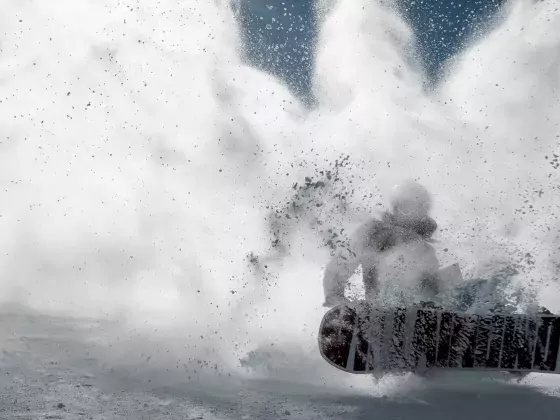High, low, corn, and snirt. What's that got to do with snow?
SNOWSEEKERS
There is a saying that the Inuit have at least 50 words to describe snow. That statement stretches the truth of the original works by anthropologist Franz Boas over a century ago who stated the languages and dialects of the north had many words to say snow.
In truth, he was saying it was like the English vocabulary - like when we know that a stream, or creek or dew or rain refers to water. Same word root but different, um, words. Scholars and humourists had the list grow and grow. By 1984 an unsigned editorial in the New York Times said the number was closer to 100 only fueling the debate as to what an Inuit has to say about snow.
Enough about history, what about today. What do the snow reports mean when they talk about corn snow, or powder or packed powder for that matter? There is a science to reading snow and the patrollers at resorts and the meteorologists take it very seriously.
Let's take a look at the words for snow that are important to us.
Nimbostratus clouds - While those who don't ski or board dont like them, we love them. Those grey, thick, clouds that cover the entire sky dumping heaps of snow for freshies are our faves.
Chinook winds - If places like Calgary are experiencing a chinook, that usually means any of the ski resorts on the other side of the Rockies are getting snow. A chinook is caused by winds that originated on the Pacific Coast. As they head east, they bump into the wall of mountains and out of frustration, dump rain or snow, warm up and rise. As they get over the peaks they rush down the east slope and melt the snow in their path.
High-pressure systems - bring on the sunshine because warm air is pushed down causing dry air (no clouds).
Low-pressure systems - bring on the snow because cool air is allowed to rise and vaporize into clouds, condense and hopefully turn into snow and not rain.
Blizzards - happen when warm air traps cold air below it. Where does the moisture go? Down as snow.
Snow - occurs when water vapours in the air freeze before they turn to water (Sublimation). The snow forms because crystals of ice cling to particles of dust in the air. Yes, each snowflake is different because each flake can have up to 200 crystals of ice.
Wet snow verses dry snow - Have you skied during a snowstorm at Whistler and over at Kicking Horse? Whistler will most likely have wet snow while the runs at Kicking Horse are covered in fluffy Champagne Powder and it all has to do with how warm the earth surface is compared to the air on top. If both the troposphere (atmosphere closest to the earth) and the ground are below the freezing mark like it usually is in the Rockies, the snow will have a minimal amount of liquid. The coastal mountains where Whistler is arent usually as cold as the Rockies so there is more moisture in the air causing denser snow to pile up. Other resorts known for fluffy powder include Sun Peaks, SilverStar and Big White.
Corn Snow - found usually in the spring due to repetitive thawing, refreezing and recrystallization. Its like skiing on marbles.
Packed Powder - True Powder is the stuff falling now or last night. Packed powder has been on the ground long enough to compress with time but is still sweet to find.
Wind Slab - Here's where you don't throw caution to the wind. A wind slab is a layer of relatively stiff hard snow that has drifted on the leeward side of a ridge. They can form over weaker softer fresh or packed powder. This is exactly what the ski patrol are looking for its prime for creating avalanche hazards on steep slopes.
Watermelon Snow- Have you ever trekked across a glacier or icefield in the summer? Sometimes you'll see this crazy red stuff on the snow. Some say it smells like watermelon. It's caused by a red-coloured green algae called Chlamydomonas nivalis. Dont eat it.
Biofog - thats that fog you make as you breath or sweat while out in the cold. Dont expect to make a biofog until its super cold outside.
Snirt- that's the crap in the parking lots pushed up by the plow as it pushes dirt, road salt and snow all at the same time. It's also the same name for the dirt that blows across a field of snow.
Nasal Rime - its that ice that sticks to the little hairs inside your nostril and ends up making snoticicles.
Like this story? Make sure to share it with friends and sign up for our e-news below to stay in the snow this season.
Like Our Facebook Page



